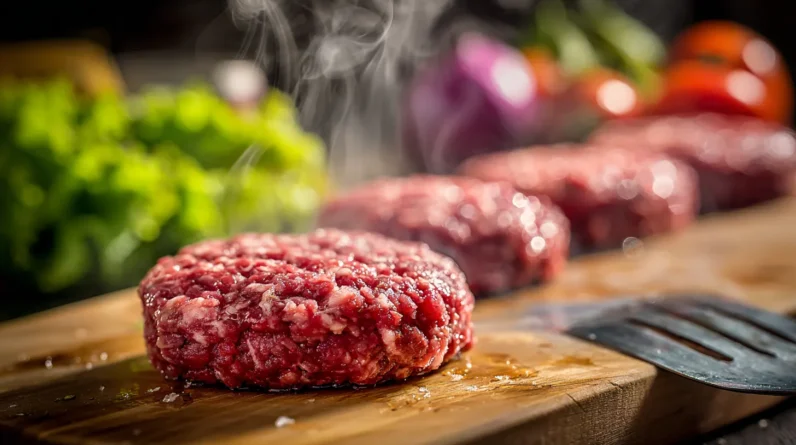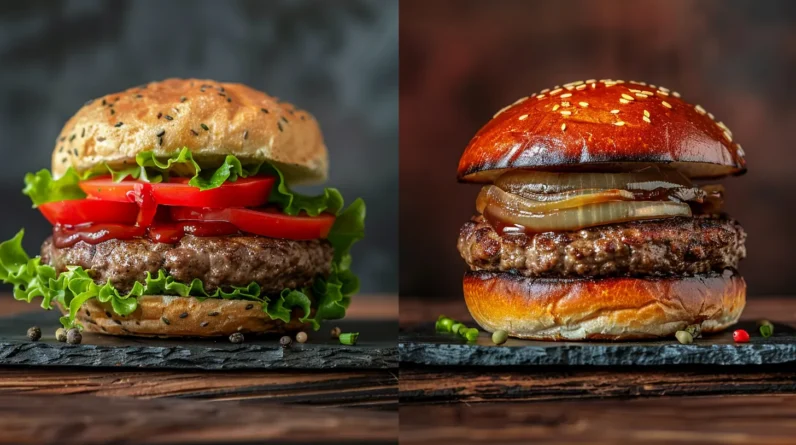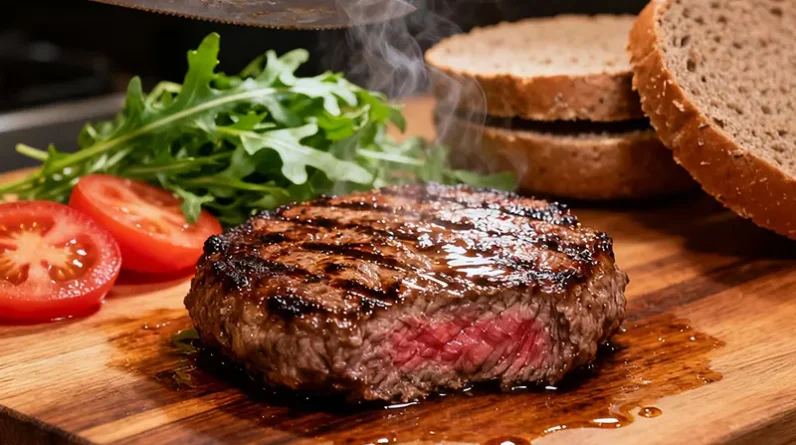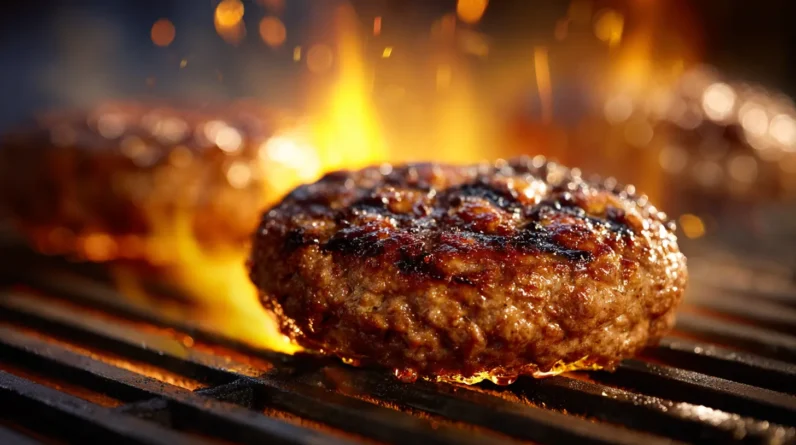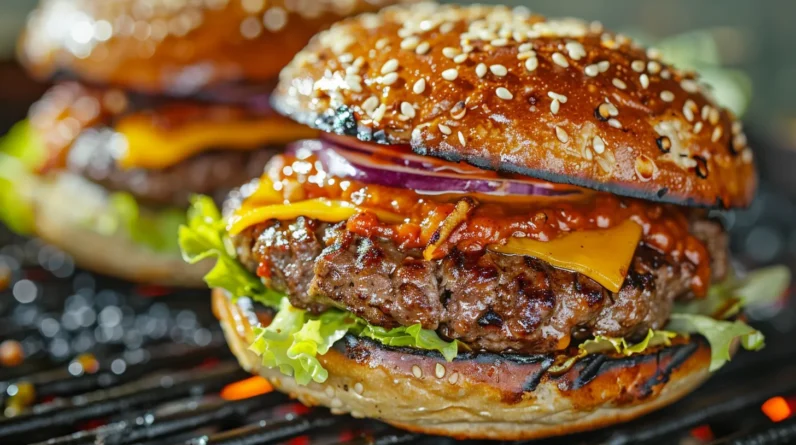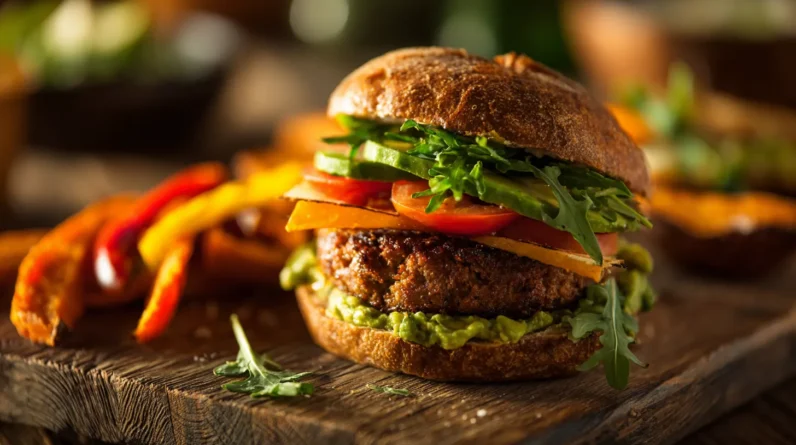
We’ve discovered that creating nutritionally superior burgers starts with selecting lean cuts like sirloin (90/10) that deliver 22g protein per 3oz serving while maintaining robust flavor. Strategic toppings like arugula provide folate and nitrates, while red onions contribute quercetin for detoxification support. Replacing traditional buns with sprouted grain or portobello caps eliminates glucose spikes while adding micronutrients. Grilling at controlled temperatures (325-350°F) prevents carcinogenic compounds while preserving B-vitamins through precision cooking techniques that optimize both taste and nutritional density.
Choosing the Right Beef Cut for Optimal Nutrition
Selection of the ideal beef cut fundamentally determines the nutritional profile of your burger. When we conduct beef comparison analysis, lean cuts like sirloin (90/10) deliver superior protein density at 22g per 3oz serving with only 166 calories. Cut selection directly impacts saturated fat content—chuck requires 80/20 ratios but provides robust flavor, while ground round offers 85/15 compromise between taste and nutrition.
We’ll maximize micronutrient density by selecting grass-fed options, which contain 2-5 times more omega-3 fatty acids than conventional beef. Ground sirloin provides best zinc (4.5mg) and B12 (2.4mcg) concentrations while maintaining manageable fat content. Strategic cut selection enables us to achieve 25-30g complete protein per patty while controlling caloric density and inflammatory lipid profiles.
Building Better Burgers With Nutrient-Dense Toppings
Optimization of burger nutritional density extends beyond the patty to encompass strategic topping selection that amplifies micronutrient bioavailability. We’ll maximize vitamin absorption by layering fresh vegetables that provide complementary phytonutrients. Dark leafy greens like arugula deliver folate and nitrates, while tomatoes contribute lycopene—enhanced when paired with healthy fats. Red onions provide quercetin and sulfur compounds that support phase II detoxification pathways.
Creative condiments replace processed alternatives with nutrient-dense options. We can substitute mayo with avocado-based spreads, delivering monounsaturated fats and fiber. Fermented additions like sauerkraut introduce beneficial probiotics while adding vitamin C. Greek yogurt-based sauces provide protein and calcium without excess sodium. These strategic combinations create synergistic effects, transforming basic burgers into micronutrient powerhouses that support ideal metabolic function.
Smart Bun Selection and Healthy Alternatives
The foundation beneath our nutrient-dense patty and carefully selected toppings substantially impacts glycemic response and overall nutritional value. Traditional wheat buns deliver rapid glucose spikes while contributing minimal micronutrients. We’ll optimize this component through strategic selection criteria.
Sprouted grain buns provide enhanced bioavailability of B-vitamins, magnesium, and zinc while reducing phytic acid content. Their lower glycemic index maintains stable blood glucose levels. Bun alternatives like portobello mushroom caps deliver potassium, selenium, and ergothioneine while eliminating refined carbohydrates entirely. Sweet potato rounds offer beta-carotene, fiber, and complex carbohydrates with superior satiety profiles.
For gluten free requirements, almond flour or coconut flour-based options provide healthy fats and protein while maintaining structural integrity. Cauliflower buns maximize vegetable intake while minimizing caloric density, supporting weight management objectives without compromising burger satisfaction.
Mastering Cooking Techniques for Maximum Flavor and Health
Beyond selecting ideal bun foundations, our cooking methodology determines both flavor development and nutrient preservation throughout the preparation process. We’ll optimize grilling methods by maintaining medium heat (325-350°F) to prevent carcinogenic compound formation while achieving proper internal temperature of 160°F. Direct grilling creates Maillard reactions that enhance flavor without compromising protein bioavailability.
Alternatively, slow cooking techniques preserve moisture content and minimize nutrient degradation. We can utilize sous vide preparation at 140°F for extended periods, ensuring even protein denaturation while retaining B-vitamins and minerals that conventional high-heat methods destroy. Pan-searing followed by oven finishing at 375°F provides perfect crust development with controlled internal cooking.
These precision techniques maximize both palatability and nutritional density, ensuring we don’t sacrifice health benefits for taste enhancement in our burger preparation.
Portion Control Strategies That Don’t Sacrifice Satisfaction
While traditional burger portions often exceed recommended serving sizes, we can achieve ideal satiation through strategic portioning that maximizes protein density per ounce. We’ll construct 4-ounce patties using 93/7 lean-to-fat ratios, delivering 28 grams of complete protein while maintaining perfect taste profiles.
Strategic thickness matters—we’ll form patties to 3/4-inch height, creating sufficient surface area for Maillard reactions without overcooking. We can enhance perceived fullness by incorporating umami-rich flavor enhancers: mushroom powder, aged cheeses, or worcestershire sauce mixed directly into the meat.
Complement smaller patties with nutrient-dense vegetables that add volume without excess calories. Thick-cut tomatoes, grilled portobello caps, and substantial lettuce leaves create textural satisfaction. We’ll achieve satiation through strategic layering—each component contributing distinct flavors while supporting our portion control objectives without compromising gustatory experience.
Conclusion
We’ve mastered nutrient-dense beef selection, we’ve maximized micronutrient absorption through strategic toppings, we’ve optimized fiber intake with intelligent carbohydrate choices, we’ve preserved heat-sensitive vitamins through precise cooking methods, and we’ve calibrated portions for sustained satiety. These evidence-based modifications transform the traditional burger into a complete nutritional profile—delivering heme iron for oxygen transport, complete amino acids for muscle synthesis, and antioxidants for cellular protection. We’ve proven satisfaction doesn’t require nutritional compromise.


